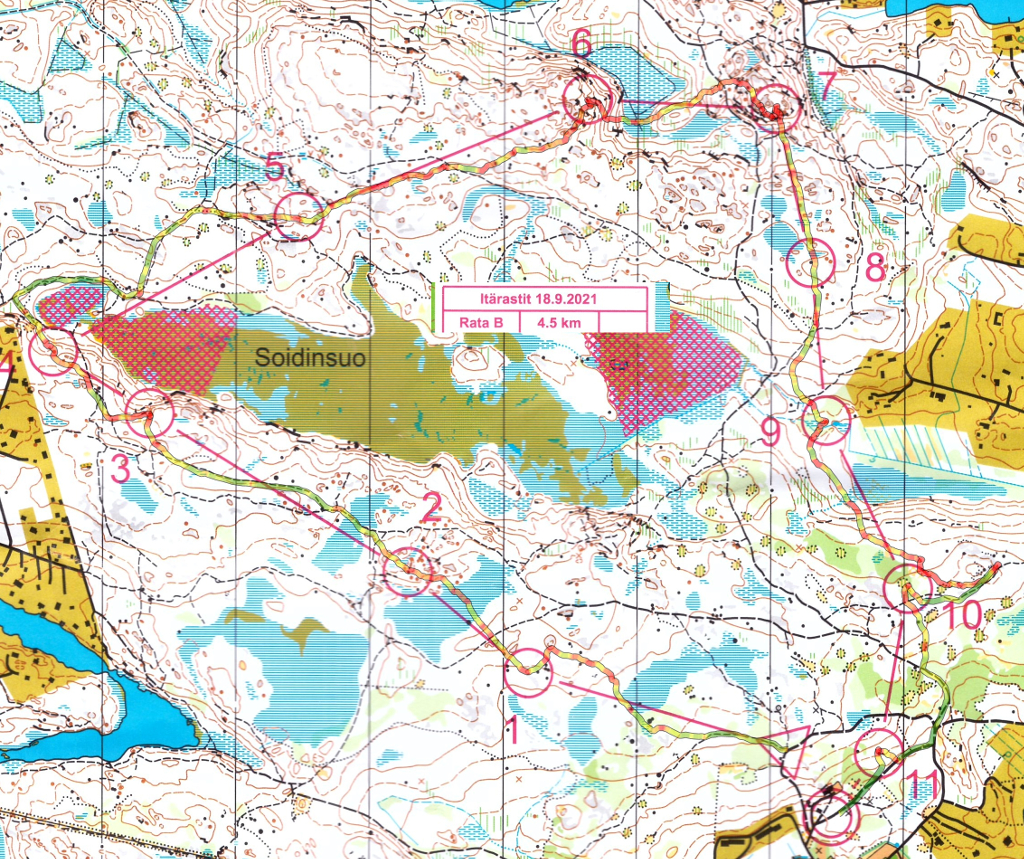Really nice runnable terrain! Maybe +12 C or so. Felt a bit unsure after #5 when the bigger path towards #6 didn't appear soon enough. Big mistake on #10 where just before the control I searched left instead of right..

Transimpedance model: TIASim
Previous similar designs:
I made a new batch of the SFP Breakout Board.
With a 1 Gbit/s SFP transciever the bandwidth when transmitting from the TX port of one board to the RX port of another board seems to be almost 1.8 GHz.
I got this husdata datalogger for my heat-pump.
It plugs in to a 3.5mm audio-connector inside the electronics box of the pump. On an IVT geo 312C pump it's fairly easy to install by removing the big front cover, then a smaller black cover, and then opening the electronics-box. I routed the wire into the pump via a tube-hole at the top, and then through the cable-hole of the electronics box (lower right). It plugs into a 3-wire 'BBT' interface.
The datalogger reads info from the pump and broadcasts it over wifi either to the husdata-website or over MQTT to any compatible device.